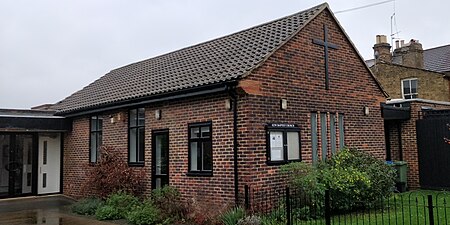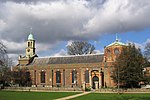Kew Baptist Church
1861 establishments in England2020 disestablishments in EnglandChurches completed in 1973EngvarB from October 2015Former churches in Kew ... and 3 more
Former churches in the London Borough of Richmond upon ThamesLondon church stubsRichmond, London

Kew Baptist Church was an independent evangelical fellowship affiliated to the Association of Grace Baptist Churches (South East). The church met, until its closure in 2020, in Windsor Road in Kew in the London Borough of Richmond upon Thames, south west London. The church was founded in 1861 in Richmond, as Salem Baptist Church. It met at 5 Parkshot, a Grade II listed building near Richmond Green. The church moved to Windsor Road, Kew in 1973 and changed its name to Kew Baptist Church in 1990.The church members unanimously affirmed a motion to dissolve the church as of 31 December 2020.
Excerpt from the Wikipedia article Kew Baptist Church (License: CC BY-SA 3.0, Authors, Images).Kew Baptist Church
Windsor Road, London North Sheen (London Borough of Richmond upon Thames)
Geographical coordinates (GPS) Address Website External links Nearby Places Show on map
Geographical coordinates (GPS)
| Latitude | Longitude |
|---|---|
| N 51.47225 ° | E -0.28741666666667 ° |
Address
Kew Baptist Church
Windsor Road
TW9 2EL London, North Sheen (London Borough of Richmond upon Thames)
England, United Kingdom
Open on Google Maps









